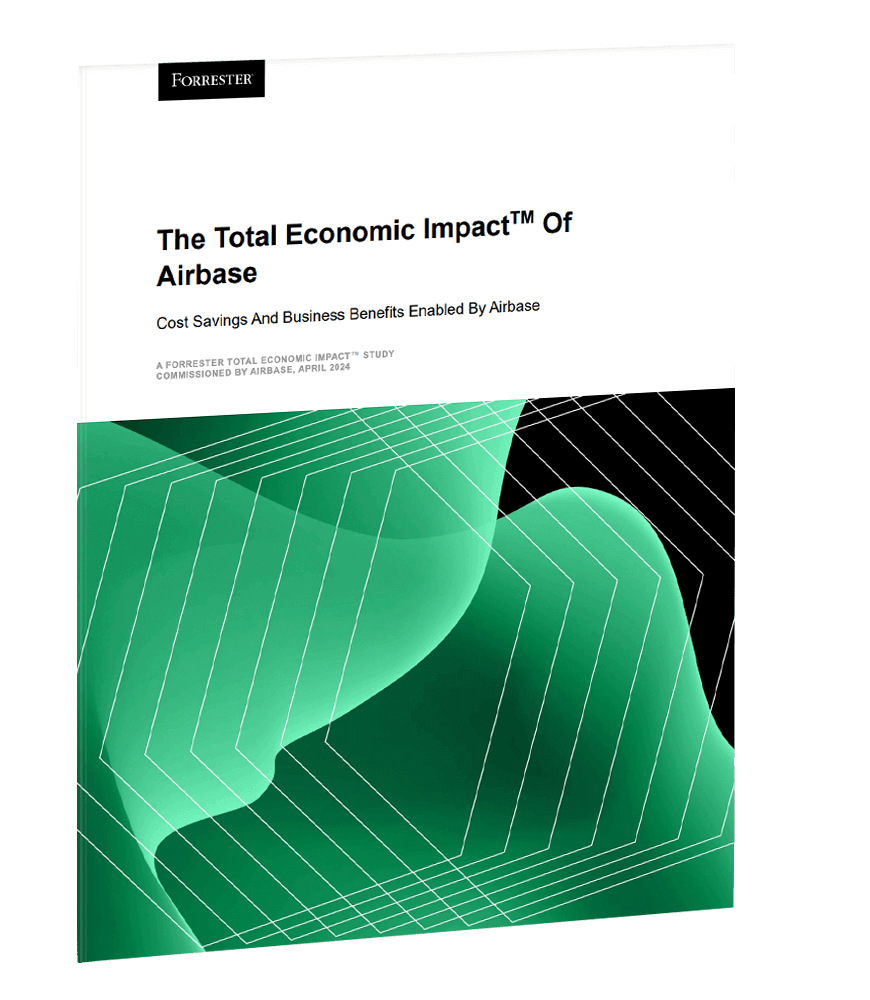Nobody likes surprises — particularly budget owners and AP and procurement teams. Last-minute pricing or contract changes disrupt planning, strain budgets, and generally add extra work and stress.
A pro forma invoice helps erase those disruptions. By providing an upfront breakdown of expenses, including customs, taxes, and shipping fees when applicable, pro forma invoices help companies anticipate total costs and avoid unpleasant surprises. This advanced cost clarity allows buyers to secure internal approvals and financing before committing to a purchase, making it easier to avoid those unexpected and time-consuming financial or logistical hurdles.
What is a pro forma invoice?
A pro forma invoice is a type of invoice sent to a client before work is started. It is different from a regular invoice because it outlines the cost and scope of goods and services that have yet to be delivered.
A pro forma invoice includes work to be done or goods to be delivered, along with the quantity, price, and other details.
What situations call for the use of a pro forma invoice?
The main difference between a pro forma invoice and a regular invoice is their purpose. A company chooses a pro forma invoice to provide an estimate of costs before a firm commitment is made.
Some reasons for issuing a pro forma invoice include:
- Cost confirmation: Pro forma invoices give all anticipated costs up front, such as shipping, customs, and taxes. Knowing all costs helps buyers secure financing and avoid unexpected charges before they commit to a purchase.
- Internal approvals: Buyers often need internal approvals before finalizing orders, especially for large or international purchases. Pro forma invoices give advance notice without triggering accounting or payment processes, helping buyers make informed decisions and avoid unnecessary delays.
- Negotiation and adjustment: Unlike a regular invoice, a pro forma invoice can be changed with negotiation. This flexibility allows both parties to make adjustments as needed before agreeing to final terms, reducing misunderstandings or the need for invoice corrections later on.
- Compliance and customs requirements: In international trade, pro forma invoices are often needed for customs processing or securing licenses. They serve as preliminary documentation for import procedures and ensure accurate declarations without requiring immediate payment from the buyer.
Pro forma invoice format.
A pro forma invoice should be clearly labeled “Pro Forma Invoice.” It should contain as much information as possible on the potential transaction, which could include:
- Product description.
- Quantity of goods or services.
- Selling price.
- Customer/seller specifications.
- Transaction date.
- Delivery date.
- Shipping costs.
- Handling fees.
Sample template of a pro forma invoice.
Here’s a simple pro forma invoice template.

How and when to issue a pro forma invoice.
A pro forma invoice often comes into play early in a transaction.
Pro forma invoices are usually provided after the buyer expresses interest in a product or service but before a purchase order is issued.
They serve as an early bill of sale, with the items, prices, terms, and estimated costs. They’re especially common in international transactions where import/export documentation is needed.
When to use a pro forma invoice.
1. Quotation stage: A pro forma invoice can be used as a formal quote when the buyer requests detailed pricing and terms.
2. Approval and budgeting: Buyers may need this invoice to gain internal approval or make budgeting allocations.
3. Documentation for customs: In international trade, pro forma invoices help buyers prepare for import and customs requirements.
Initiating the pro forma invoice process.
1. Request from the buyer: If the buyer requests a formal quote or documentation to initiate the purchase, the seller can offer a pro forma invoice.
2. Include detailed information: The seller should ensure that the pro forma invoice includes:
- Item description, quantity, and pricing.
- Payment terms and expected payment schedule.
- Estimated shipping date and costs, if applicable.
- The validity period of the pro forma invoice.
- Any conditions or limitations related to the offer.
3. Send the pro forma invoice: Once created, the pro forma invoice can be sent to the buyer for approval or further negotiation.
Legalities and steps.
While a pro forma invoice isn’t a legally binding document, it’s important to consider the following:
- Ensure accuracy: The pro forma invoice should be as accurate as possible, as it may form the basis of a binding sales invoice later.
Customs documentation: In international transactions, customs may require a pro forma invoice to classify goods and determine tariffs. - Buyer acknowledgment: Some sellers request that the buyer sign or acknowledge the pro forma invoice to confirm acceptance of terms, though it is non-binding.
Finalizing the sale.
Once the buyer approves the pro forma invoice, the next steps include:
1. Issuing a formal PO from the buyer.
2. Creating and sending a sales invoice based on the approved pro forma invoice
3. Confirming payment terms, delivery schedules, and any other logistics.
Example of when to use a pro forma invoice.
Contrast these two scenarios to see the benefits of using a pro forma invoice.
Scenario 1: Atlas Furniture Co. receives an order for 50 custom-made standing desks. They immediately start sourcing materials and begin production. A month later, the 500 desks are complete, so they send an invoice to the buyer.
However, the buyer is unhappy because:
- They believe the price could have been negotiated lower.
- They expected an earlier delivery date.
- They would prefer longer payment terms.
Scenario 2: Atlas Furniture Co. sends a pro forma invoice outlining the price of the desks, estimated delivery date, and payment terms. The buyer reviews and negotiates.
After the negotiation is complete and both sides are satisfied with the terms, production starts. When production is completed, Atlas Furniture Co. converts the pro forma invoice into a final sales invoice.
How to generate a pro forma invoice in Excel.
Creating a pro forma invoice in Excel is straightforward, especially since Excel provides customizable templates that can be adapted to fit your needs. Here’s a step-by-step guide to creating one from scratch:
1. Set up basic structure.
Open Excel and create a new blank workbook.
Use the first row for your invoice title. Type “Pro Forma Invoice” in a larger, bold font, and center it across the top columns (e.g., A1).
2. Add company and client information.
In the next few rows, add your company’s name, address, phone number, and email.
Below that, include the client’s information (name, address, and contact details).
3. Invoice details.
Include fields for important details like:
- Invoice Number (e.g., “Pro forma-001”)
- Date of Issue
- Payment Terms (e.g., “Net 30”)
- Due Date (you could set this as a formula based on the payment terms)
4. Add table for items.
Create a table with the following headers:
- Description
- Quantity
- Unit Price
- Total (Quantity * Unit Price)
Format these headers in bold, and start with the first row below your company and client information (e.g., row 10).
5. Use formulas to calculate totals.
For each item, calculate the total by multiplying Quantity and Unit Price.
At the end of the list, add a Subtotal row.
Below the Subtotal, include any additional fields like Tax or Discount.
Finish with a Grand Total row, summing up the subtotal, tax, and any other additional charges.
6. Add optional notes and terms.
Below the total, add any additional information about payment methods, terms, or specific instructions for the buyer.
7. Formatting for clarity.
Format borders around your table to make it look cleaner.
Adjust column widths for descriptions and currency formats for prices.
Consider adding your logo for branding.
8. Save as template (optional).
If you’ll be creating similar invoices regularly, save the file as a template. Go to File > Save As and select “Excel Template (.xltx)” in the file type dropdown.
Quick tips:
Use conditional formatting if needed, to highlight due dates.
Use Excel’s built-in templates under File > New and search for “invoice templates,” which you can customize to fit a pro forma format.
Pro forma invoice FAQ.
What’s the difference between a pro forma invoice and a quotation?
The primary difference between a pro forma invoice vs. a quotation like an RFQ is that a pro forma invoice is a more formal, preliminary bill that includes a commitment to the terms specified, although it is not legally binding.
A quotation, on the other hand, is a general price estimate without any commitment, so it’s simply an offer of terms that can be negotiated further.
What’s the difference between a pro forma invoice and a tax invoice?
In contrast to a pro forma invoice, a tax invoice is a legally binding document issued once a sale is confirmed. It includes specific details like the taxes, total amount due, payment terms, and other compliance information.
A tax invoice is used for accounting, tax reporting, and payment purposes, while a pro forma invoice is used only for information or planning purposes until the transaction is complete.
Is a pro forma invoice a real invoice?
No, a pro forma invoice is not a real invoice. It’s a preliminary document provided before a sale is finalized and doesn’t require payment, nor is it legally binding.
Can you pay a pro forma invoice?
Yes, you can pay a pro forma invoice.
In fact, some businesses may ask for payment of a pro forma invoice as a deposit to initiate an order. However, once payment is made, the seller should issue a formal tax invoice as the official, legally binding record for accounting and tax purposes.
Who uses a pro forma invoice?
Pro forma invoices are often used by businesses for custom or high-value orders before a more formal sales arrangement is made. They’re also commonly used by exporters and importers in international trade.
Are pro forma invoices legal?
Pro forma invoices are legal documents but are not legally binding. They serve as preliminary quotes or cost estimates but they don’t replace official invoices required for accounting or tax reporting.
Is it “per forma invoice” or “pro forma invoice?”
The term is “pro forma invoice,” not “per forma invoice.” The pro forma invoice meaning stems from a Latin term meaning “for the sake of form,” indicating it’s a formality before a final invoice.
The importance and benefits of pro forma invoices.
Pro forma invoices help organizations anticipate costs, gather appropriate approvals, and avoid unexpected financial hurdles. With a clear, upfront breakdown of expenses, including taxes and shipping fees, a pro forma invoice helps AP teams stay organized and on top of budgets.
 Jira Integration – Streamline Your Workflows
Jira Integration – Streamline Your Workflows  Ironclad Integration – Simplify Legal Operations
Ironclad Integration – Simplify Legal Operations  Asana
Asana 




